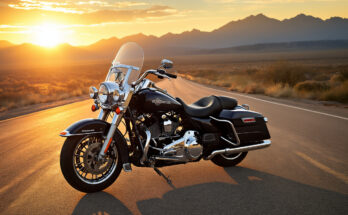Ever stood in front of your car thinking, “Something’s missing”? The answer is probably sitting right under your vehicle—those factory rims just aren’t cutting it.
Your wheels aren’t just functional parts; they’re style statements that transform your ride from forgettable to head-turning. Choosing the right rims for your car involves more than picking what looks cool in a catalog.
This guide will walk you through exactly how to select wheels that complement your vehicle’s personality while considering crucial factors like fitment, performance, and budget constraints.
The perfect set of rims can elevate your car’s appearance from ordinary to extraordinary—but get the wrong size or style, and you might as well have thrown your money into a pothole.
Curious how wheel offset could make or break your entire setup?
Understanding Rim Basics
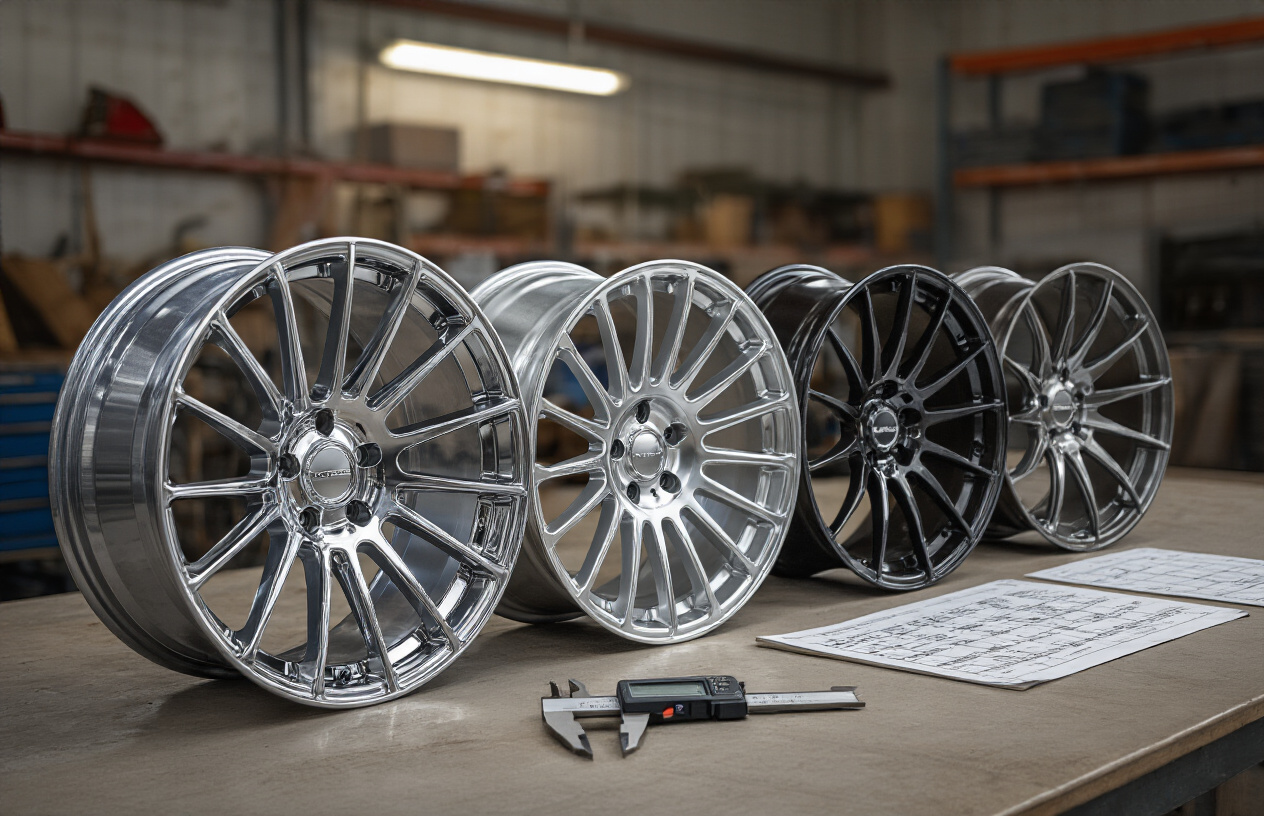
How Rims Impact Vehicle Performance
Rims aren’t just pretty faces for your car. They actually affect how your ride handles on the road.
Bigger rims with low-profile tires? You’ll feel every bump, but your cornering will be sharper. Your car will stick to the road better when you’re taking those curves at speed.
Smaller rims with chunkier tires? Much more comfortable ride, but you might notice your car doesn’t feel as responsive when you turn the wheel.
And weight matters big time. Heavy rims make your suspension work harder and can dull your acceleration. Light rims? Your car feels more nimble, like it lost 20 pounds overnight.
Key Terminology: Size, Offset, Bolt Pattern
Size is pretty straightforward – it’s the diameter measured in inches. Most passenger cars run 15-18 inches, while those flashy SUVs and trucks might rock 20+ inches.
Offset is trickier but super important. It’s where the mounting surface sits relative to the centerline of the wheel. Positive offset means the mounting surface is toward the street side. Negative offset pushes your wheels outward, giving that aggressive stance.
Bolt pattern? That’s the number of lug nuts and the diameter they form. Like “5×114.3” means 5 lugs in a 114.3mm circle. Get this wrong, and your new rims won’t even bolt on.
Material Differences: Alloy vs. Steel
Steel rims are the workhorses – cheap, tough, and boring as watching paint dry. They’ll survive potholes that would shatter fancier wheels, but they’re heavy as bricks.
Alloy rims (usually aluminum) bring the style and performance. They’re lighter, dissipate heat better from your brakes, and come in countless designs. The downside? They cost more and can crack if you hit something hard enough.
Some premium rides even offer forged aluminum or magnesium alloys. These are the supermodels of the rim world – gorgeous, incredibly light, and priced accordingly.
Weight Considerations and Fuel Efficiency
The physics is simple: lighter wheels mean less rotational mass, which translates to better acceleration and fuel economy. It’s not just about the total weight of your car – it’s about where that weight sits.
Dropping 5 pounds per wheel is like removing 20 pounds from your vehicle’s center. Your engine doesn’t have to work as hard to get those wheels spinning or to bring them to a stop.
Real-world impact? Switching from heavy steel wheels to lightweight alloys can improve your fuel economy by 1-2 mpg. That adds up over thousands of miles.
And if you’re into performance, lighter wheels improve everything – acceleration, braking, cornering, and even suspension response. Your car just feels more alive.
Determining the Right Size
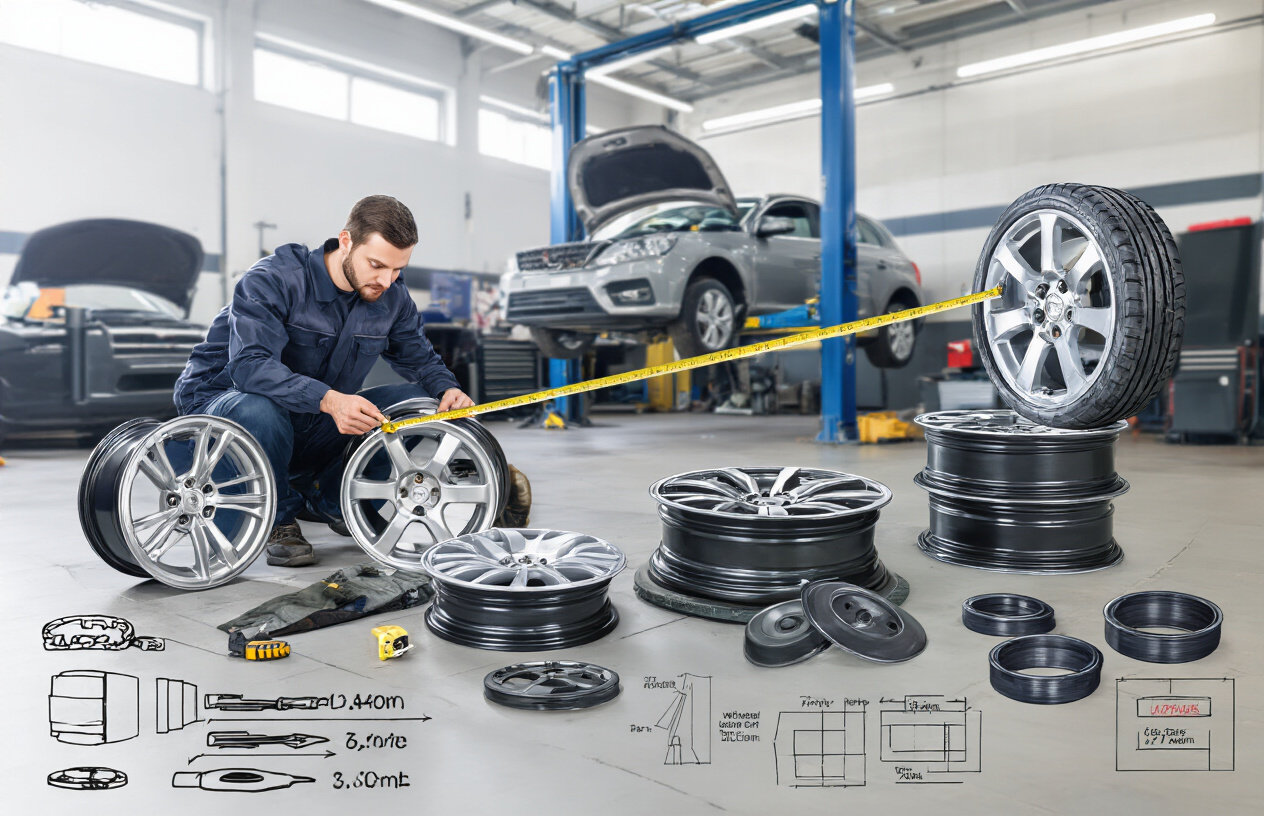
A. Reading Tire and Rim Specifications
Ever stared at those weird numbers on your tire sidewall? They’re actually a code telling you everything about your wheel setup. For example, “225/45R17 91W” means:
- 225: tire width in millimeters
- 45: aspect ratio (sidewall height is 45% of the width)
- R: radial construction
- 17: rim diameter in inches
- 91W: load index and speed rating
As for rims, you’ll need to know:
- Diameter (17″, 18″, etc.)
- Width (7.5J, 8J, etc.)
- Offset (ET35, ET45, etc.)
- Bolt pattern (5×114.3, 4×100, etc.)
B. OEM vs. Aftermarket Sizing
Factory wheels (OEM) are specifically designed for your car’s handling, braking, and comfort. They’re the safe bet.
Aftermarket wheels offer more style options but require careful selection. Going with the wrong size can mess with your speedometer, fuel economy, and overall driving feel.
| OEM Wheels | Aftermarket Wheels |
|---|---|
| Limited designs | Endless style options |
| Perfect fitment | Requires research |
| Factory warranty | May void warranties |
| Conservative sizing | Ability to upsize |
C. Upsizing: Benefits and Limitations
Bigger isn’t always better. Upsizing can give your ride that aggressive stance, but it comes with tradeoffs.
Benefits:
- Enhanced cornering grip
- More responsive steering
- Better brake clearance
- Head-turning looks
Limitations:
- Harsher ride quality
- Potential rubbing issues
- Increased unsprung weight
- Higher replacement costs
The golden rule? Stay within 3% of your original tire’s overall diameter.
D. Calculating Proper Fitment
Finding the perfect fit isn’t just eyeballing it. You need math (sorry).
The overall diameter formula:
((Width × Aspect Ratio ÷ 100) × 2) + (Rim Diameter × 25.4)
For example, if you’re changing from 215/55R16 to a 225/50R17, calculate both to ensure they’re close in overall diameter.
Offset matters too. It determines how your wheels sit in the wheel wells. Too much positive offset and they’ll rub against suspension components. Too negative and they’ll stick out, rubbing against fenders.
E. Clearance Issues to Avoid
Nothing ruins your day like hearing that awful rubbing sound after installing new rims.
Common clearance problems:
- Fender rubbing during turns
- Suspension contact at full compression
- Brake caliper interference
- Rubbing at full steering lock
Test-fit before permanent installation. Turn the steering wheel lock-to-lock and check for clearance at all points. Remember that your car will compress more when hitting bumps or carrying passengers.
Always account for chains if you live in snowy regions. That extra 10-15mm can be the difference between smooth sailing and a grinding nightmare.
Matching Style with Your Car’s Aesthetics

Design Elements That Complement Your Vehicle Type
Picking rims that match your car’s personality isn’t just about what’s trending – it’s about finding that perfect visual harmony. Sedans typically look sharp with multi-spoke or mesh designs that scream sophistication. SUVs and trucks? They need something bolder – think chunky five or six-spoke rims that emphasize strength.
Sports cars deserve rims that highlight their performance nature – sleek split-spoke designs or Y-patterns that show off those brake calipers. Luxury vehicles pair beautifully with intricate multi-piece wheels featuring polished lips and detailed machining.
Classic cars? Stay authentic with period-correct styles that maintain their timeless appeal. Modern electric vehicles often look best with aerodynamic designs that complement their forward-thinking aesthetic.
Remember – bigger isn’t always better. Your wheel size should respect your car’s proportions. An oversized rim on a compact car looks as awkward as tiny wheels on a massive truck.
Color Coordination Strategies
The color of your rims can make or break your car’s look. The safest play? Silver or hyper silver finishes work with literally any paint color and stay looking clean longer.
Black rims create dramatic contrast against light-colored vehicles but can disappear into darker paints. For a subtle look that still pops, graphite or gunmetal finishes strike that perfect balance between black and silver.
Bronze and gold finishes are having a moment – they look especially striking against white, black, blue, or green cars. Chrome? Use sparingly unless you’re going for that classic luxury vibe.
Color-matched rims where the face matches your paint can look amazing, but it’s a bold move that requires perfect execution.
Spoke Patterns and Visual Impact
Spoke count and arrangement dramatically affect your car’s personality. Five-spoke designs convey simplicity and strength – they’re the classic choice that never goes out of style.
Multi-spoke patterns (10+ spokes) create a busy, intricate appearance that works beautifully on luxury and European models. Y-spoke and split-spoke designs bridge the gap between sporty and refined.
Mesh or honeycomb patterns scream performance and aggression, perfect for sports cars. Want maximum visual impact? Directional spokes that appear to spin in one direction create motion even when parked.
The thickness of each spoke matters too. Thin, delicate spokes create a light, elegant look while thick, substantial spokes project strength and durability.
Some performance enthusiasts swear by the visual weight concept – open designs that show more of the brake components often make a car look faster and more serious about performance.
Budgeting for Quality
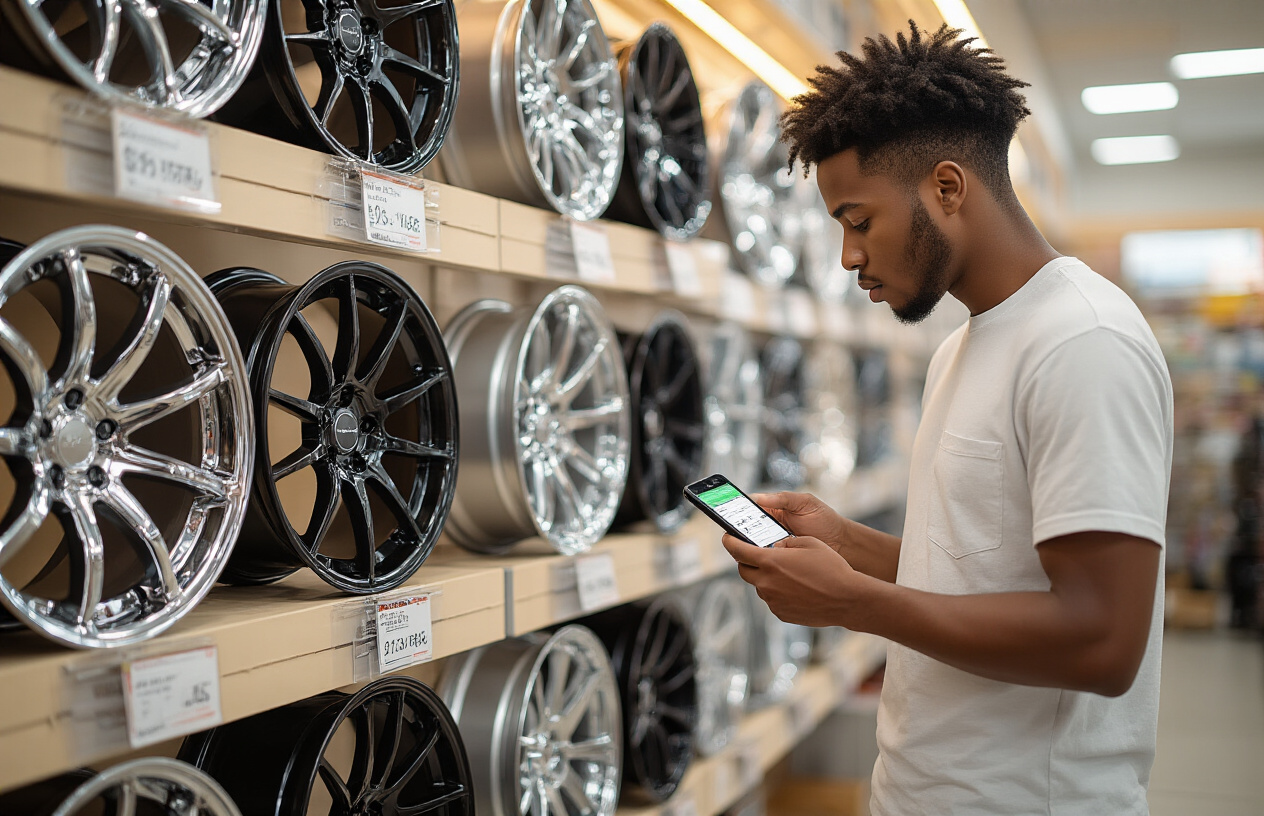
A. Price Range Expectations
Let’s talk cash – rims aren’t cheap, but they don’t have to break the bank either. Budget wheels start around $100 per rim, while mid-range options typically run $200-500 each. Premium and forged wheels? Those babies can easily hit $1,000+ per wheel.
What you’re paying for is usually material quality, manufacturing process, and brand reputation. Cast aluminum wheels cost less than forged ones. No-name brands are cheaper than BBS or HRE.
The sweet spot for most car enthusiasts is between $200-400 per wheel. At this price point, you get decent quality without remortgaging your house.
B. Value vs. Cost Analysis
The cheapest rims aren’t always the best value. Those $80 wheels might seem like a steal until they crack after hitting your first pothole.
Consider what you’re getting:
- Weight (lighter = better performance)
- Strength (important for rough roads)
- Finish quality (how long will they look good?)
- Warranty coverage
Sometimes spending an extra $100 per wheel gets you something that’ll last years longer and maintain its looks. That’s not wasting money – that’s smart shopping.
C. Long-term Investment Considerations
Quality wheels are like good shoes – they’re worth investing in. Higher-end rims:
- Hold their value better for resale
- Require less maintenance (fewer repairs)
- Resist corrosion and damage
- Often come with better warranties
A $400 wheel that lasts 8 years costs you $50 per year. A $200 wheel that needs replacement after 3 years? That’s $67 annually. Math doesn’t lie.
D. When to Splurge and When to Save
Splurge when:
- You drive aggressively or on rough roads (strength matters)
- Your car is high-performance (weight reduction has real benefits)
- You’re keeping your car long-term
- Appearance is critically important to you
Save when:
- You’re on a strict budget (decent cast wheels are fine)
- Your car is a daily commuter on good roads
- You plan to sell the car soon
- Function matters more than flash
The best approach? Spend extra on key factors that matter for your specific situation, and economize on the rest.
Installation and Maintenance
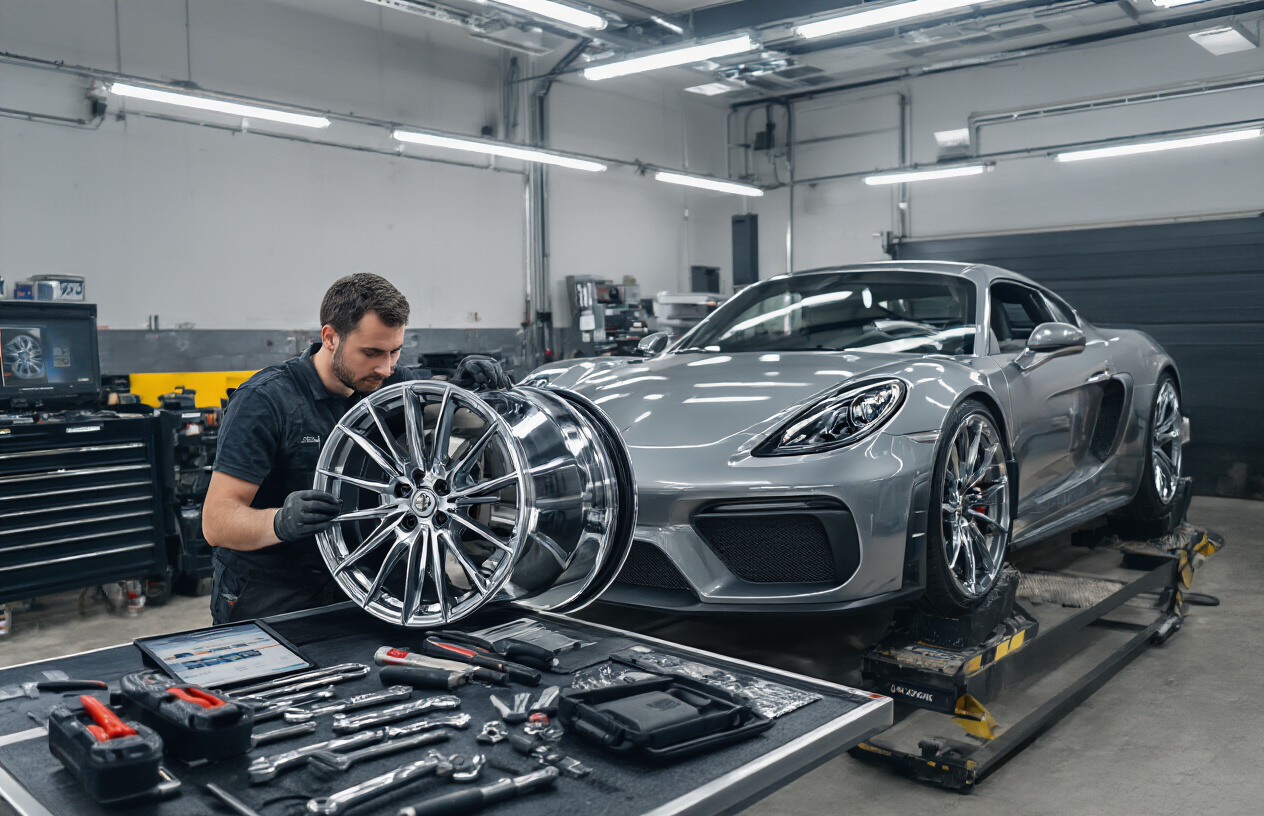
Professional vs. DIY Installation
Look, we all love saving a few bucks, but when it comes to installing new rims, sometimes DIY isn’t the smartest move.
Professional installation typically costs $20-40 per wheel, but what you’re really paying for is peace of mind. Pros have the right equipment, torque wrenches calibrated properly, and do this stuff all day long.
DIY installation? Sure, it’s doable if you’ve got:
- A quality jack and jack stands
- A torque wrench
- The right socket sizes
- About 1-2 hours of free time
But mess up the installation and you might hear that terrifying “thunk” as your wheel decides to go solo down the highway.
Proper Torque and Safety Checks
Getting your lug nuts torqued properly isn’t just mechanic talk—it’s literally what keeps your wheels attached to your car.
Too loose: Wheel wobble, studs snap, wheel falls off (bad day).
Too tight: Warped rotors, stripped threads, broken studs (also bad day).
Here’s what to remember:
- Follow manufacturer specs (usually 80-100 ft-lbs for passenger cars)
- Tighten in a star pattern, not circle
- Recheck torque after 50-100 miles of driving
Seasonal Care Tips
Your rims face different enemies depending on the season:
Summer: Road tar, brake dust, intense UV rays
Winter: Salt, slush, gravel, potholes
Wash your wheels every two weeks minimum—weekly in winter. And please, use wheel-specific cleaners. Household cleaners can strip protective finishes faster than you can say “those rims were expensive.”
Protecting Your Investment
Quality rims aren’t cheap. Protect them:
- Apply wheel sealant every 3-4 months
- Consider wheel locks if you’ve got premium rims
- Park away from curbs (curb rash is the rim killer)
- Fix small damage early—that tiny scratch becomes corrosion later
And remember that tire dressing? Keep it off your rims. That stuff attracts dust like magnets attract metal.
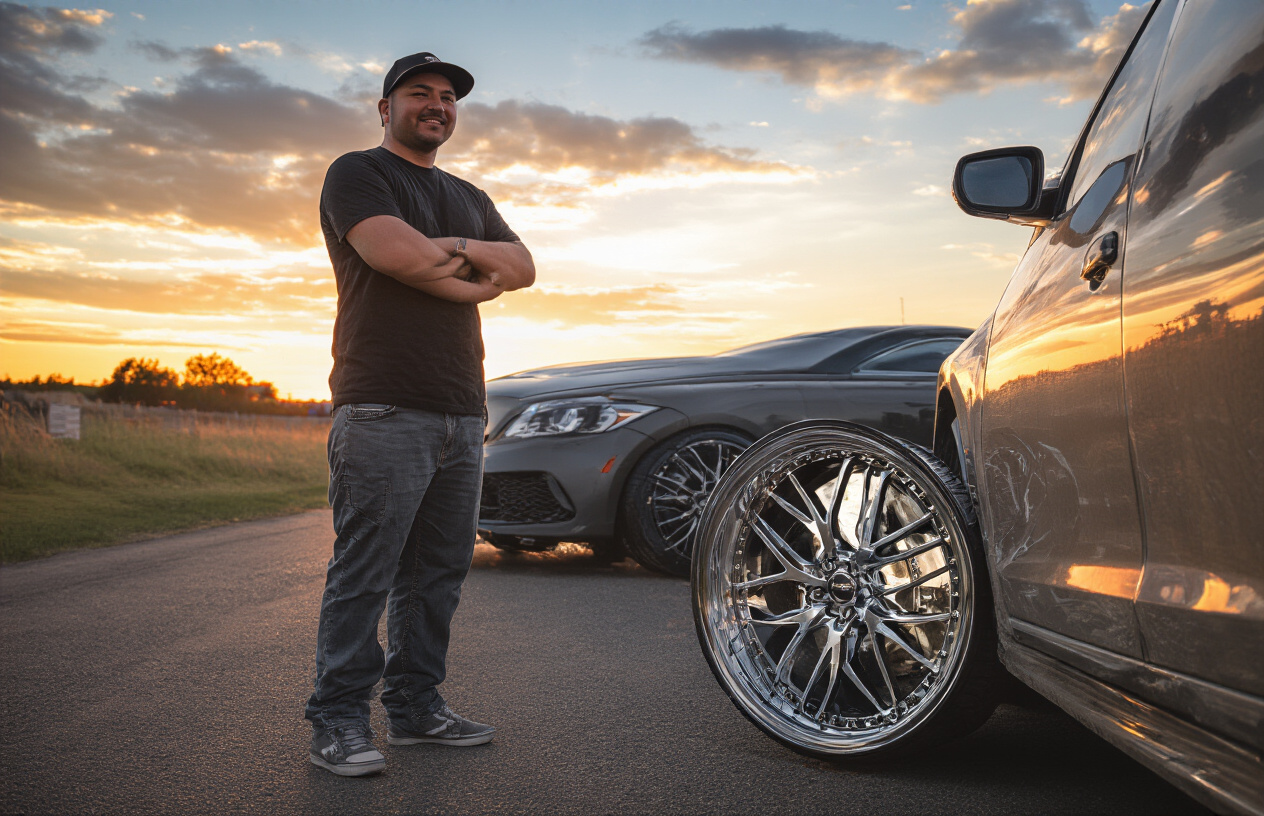
The perfect set of rims can transform your car’s appearance, elevating it from ordinary to eye-catching. As we’ve explored, selecting the right rims involves understanding basic specifications, ensuring proper sizing for your vehicle, and choosing a style that complements your car’s existing aesthetic. Quality should never be compromised, even when working within budget constraints, as the right balance between price and durability ensures long-term satisfaction.
Remember that the journey doesn’t end with purchase – proper installation and regular maintenance are crucial for both safety and longevity. Take time to research, consult professionals when needed, and invest in rims that reflect your personal style while enhancing your vehicle’s performance. Your car is an extension of your personality, and the right set of rims helps tell your unique story on the road.




